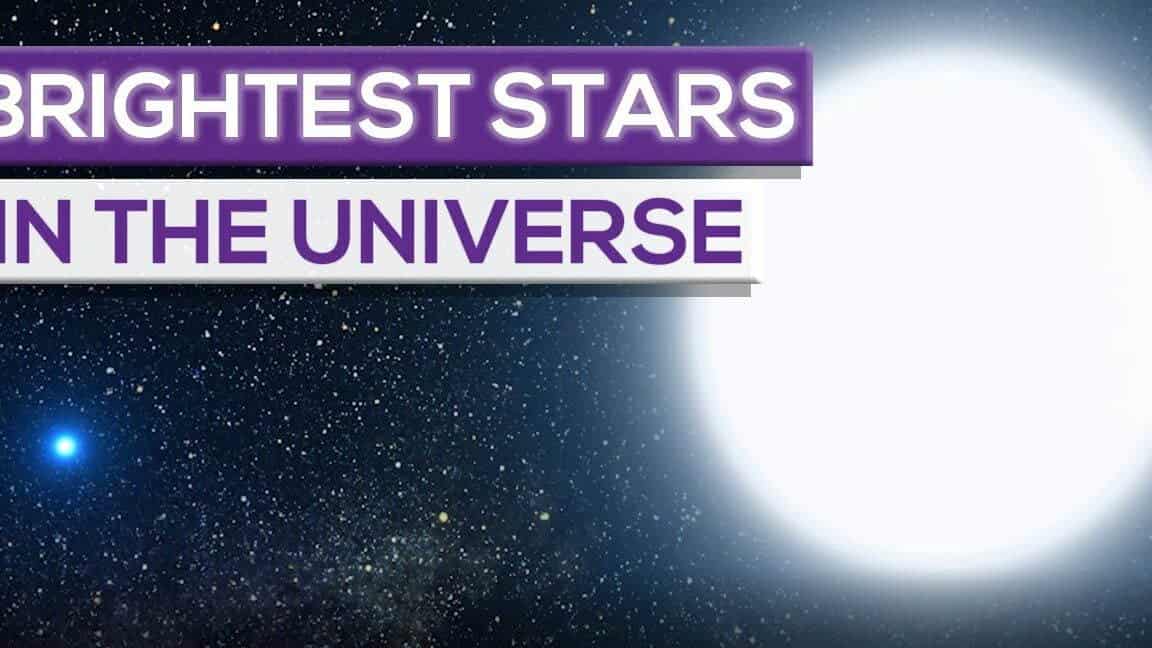Astrology, the ancient field of study, asserts that the stars have a profound impact on human existence. This belief is widely accepted in modern times, as astrological predictions continue to captivate audiences around the world.
For ages, individuals have been fascinated by the enigmatic celestial bodies that emerge in the nightly sky. As far back as ancient times, people initiated the exploration of the stars and crafted maps of the star-studded heavens. Each newfound star was assigned a unique name, as if humanity believed these mystical luminaries were drawing nearer to them. These captivating entities were revered, and grand rituals were devoted to them, resulting in the creation of captivating myths and legends. The populace held the belief that deities resided within the stars, exerting control over the lives of our prehistoric ancestors. It was firmly believed that life in those heavenly realms surpassed the struggles faced on Earth, where ceaseless conflicts, diseases, famines, and calamities prevailed.
Today, just like in the past, humans are still fascinated by the breathtaking beauty of the stars that adorn the night sky. Their enigmatic and extraordinary nature captivates us. Although contemporary individuals possess a greater understanding of stars compared to their ancestors, they still hold an enduring fascination for us. Many people yearn for the opportunity to embark on interstellar voyages. Both professional astronomers and amateur stargazers dedicate themselves to the exploration of these celestial bodies. Each day, new revelations and enigmas are uncovered. Join us on a virtual expedition to discover the ten most luminous stars in the heavens.
10. Betelgeuse (α Orion).
Betelgeuse, also known as α Orionis, is one of the brightest and most well-known stars in the night sky. It is located in the constellation Orion and is easily visible to the naked eye. Betelgeuse is a red supergiant, meaning it is in the late stages of its life and is much larger and brighter than the Sun. Its size is estimated to be about 1,000 times larger than the Sun, and its brightness is about 100,000 times greater. Betelgeuse is also a variable star, meaning its brightness can change over time. In recent years, it has been observed to be dimming, leading to speculation that it may soon go supernova. Despite its distance of about 642.5 light-years from Earth, Betelgeuse is one of the closest red supergiants to our solar system.
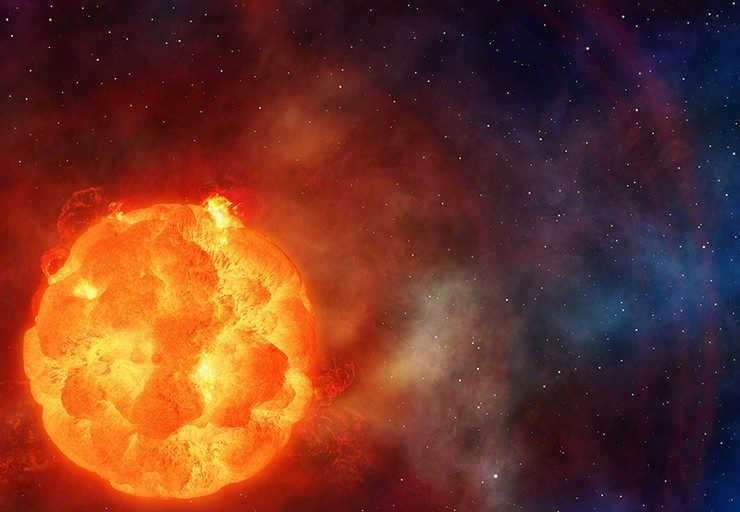
Located 570 light years away from Earth, Betelgeuse, also known as Alpha Orion, is the dimmest star in the night sky. The most intriguing aspect of this celestial body is its periodic variability, as it has inexplicably decreased by 15% in just a few decades. This puzzling phenomenon has kept scientists on their toes, leading them to propose various fascinating hypotheses regarding its origin.
Alpha Orion is classified as a red giant, and during its pulsation, it expands to a diameter 500-800 times larger than that of the Sun. To put this into perspective, if Betelgeuse were placed in our solar system, it would stretch all the way to the orbit of Jupiter.
The observation of Betelgeuse in the Orion constellation is an ongoing process, with new findings emerging daily. It is still premature to discuss the possibility of embarking on a journey to this distant star.
9. Ahernar (α Eridanus).
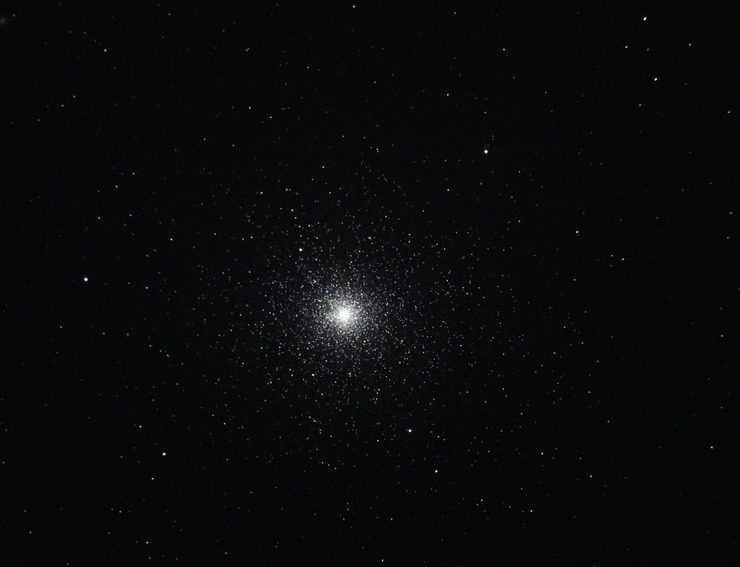
Alpha Eridana is the name given to it by astronomers. This particular star, which is blue and extremely hot, holds the ninth spot on our list of the brightest stars. Ahernar is a binary star located at the southernmost point of the Eridanus constellation. It has a flattened spherical shape that resembles an egg and possesses a mass equivalent to 8 times that of the Sun. The brightness of Alpha Eridanus surpasses that of our Sun by a factor of one thousand. The star acquired its spherical shape due to its exceptionally high rotational velocity.
The constellation was named after the renowned Phaeton, who was the son of the god Helios. As the legend goes, it was along the Eridanus that Phaethon’s chariot traversed. The journey to Ahernar would take approximately 140 light years, making it highly unlikely for it to transpire within our lifetime.
8. Procyon (the α star of the constellation Canis Minor).
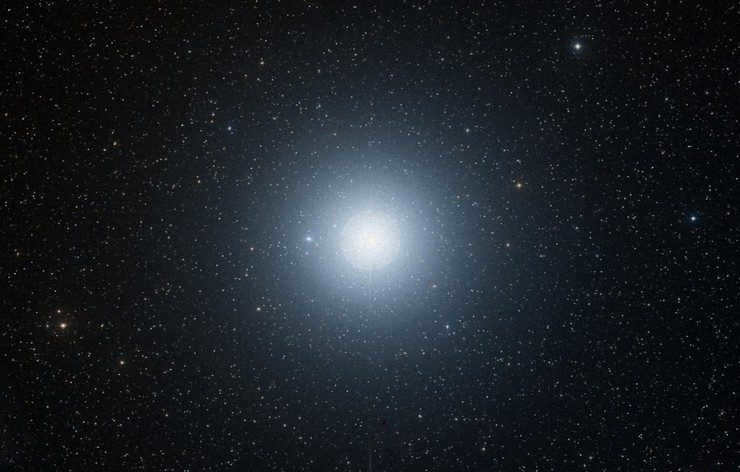
Procyon takes the eighth position in the ranking. In star charts, astronomers have referred to it as Alpha Minor Dog. This celestial object is actually a binary star system, consisting of a primary star, Procyon A, and a smaller companion, Procyon B, which emits dim light.
The constellation received its name in tribute to Heraclius, the first wine maker’s dog, who successfully discovered the burial site of his master.
Procyon rises in the sky slightly earlier than Sirius, and the ancient Greeks named it “before the dog,” which is the direct translation of the Greek word “Procyon.” Along with Sirius and Betelgeuse, Procyon forms one of the points of the “winter triangle,” which serves as a navigational landmark.
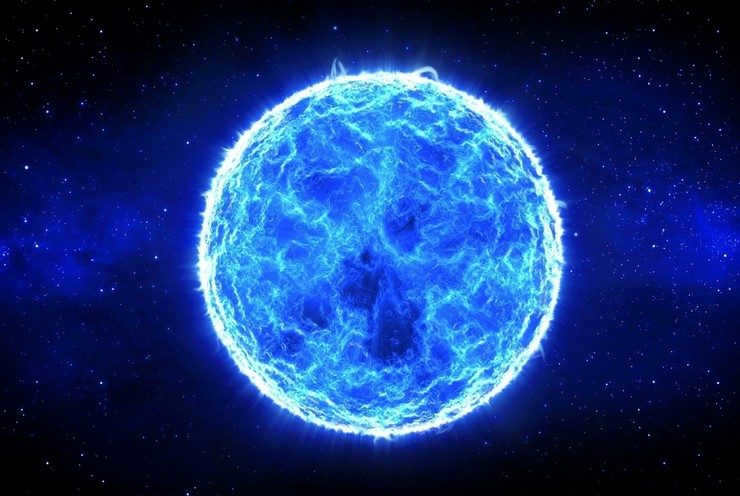
This celestial body, known as the Beta of Orion, is comprised of a trio of stars that collectively form a blue-white supergiant. Rigel, the brightest of the three, shines approximately 130,000 times more intensely than the Sun, making it the most dominant star within our observable galaxy.
Beta Orion is situated 870 light-years away from our planet. If Rigel were positioned closer to Earth, it would surpass all other stars in nocturnal radiance. With a diameter measuring 103 million kilometers, Rigel is a staggering 74 times larger than the Sun!
This star carries numerous mythical associations. The ancient inhabitants of Egypt linked it to the god Sah, who was revered as the patron deity of the deceased. Over time, Rigel came to symbolize Osiris, the principal god within the belief system of this ancient civilization.
6. Capella (α of Ascendant).
Capella, also known as α of Ascendant, is a star located in the constellation of Auriga. It is one of the brightest stars in the night sky and has a prominent place in ancient mythology and astrology. This celestial body has been observed and studied for centuries, revealing fascinating insights into the nature of the universe. Capella’s unique characteristics make it a captivating subject for astronomers and stargazers alike.
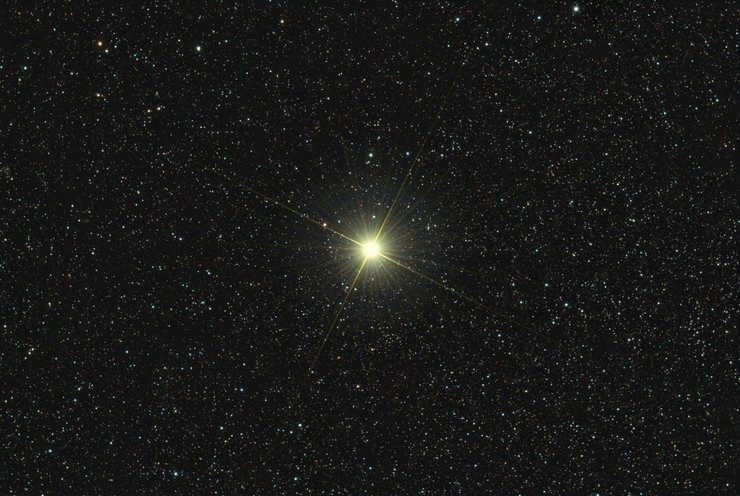
Capella is the sixth star in our ranking, and it is the third most luminous star in the Northern Hemisphere. It is located on the shoulder of the charioteer figure in the constellation of the same name. In astronomical atlases, it is referred to as Alpha of the Ascendant. What makes Capella unique is that it is a double star, consisting of two yellow giants that orbit around each other at a distance of 100 million kilometers. Together, their mass is 2.5 times that of the Sun.
A journey to Capella would require traveling approximately 42 light years.
The term Capella originates from the Greek term for goat. It is named after Amalthea, the goat who raised Zeus, the primary deity of the Ancient Greeks. Legend has it that when Zeus inadvertently broke one of Amalthea’s horns, he transformed it into the mythical “cornucopia”. This horn had the magical ability to be filled with whatever its possessor desired.
5. Vega (α Lyrae)
Vega, also known as α Lyrae, is a star located in the constellation Lyra. It is one of the brightest stars in the night sky and has been a subject of fascination for astronomers and stargazers for centuries.
Vega is a blue-white main sequence star with a spectral type of A0V. It is approximately 25 light-years away from Earth and has a luminosity about 40 times that of the Sun. It is also rotating rapidly, with a projected rotational velocity of about 236 km/s.
In addition to its brightness and rotation, Vega is known for its high metallicity, which means it has a higher abundance of elements heavier than hydrogen and helium. This makes it an interesting target for studying the formation and evolution of stars.
Vega is also notable for being the second-brightest star in the northern hemisphere, after Sirius. Its brightness and visibility have made it a popular star for navigation and observation throughout history.
Overall, Vega is a fascinating star that continues to captivate astronomers and stargazers with its brightness, rotation, and unique characteristics.
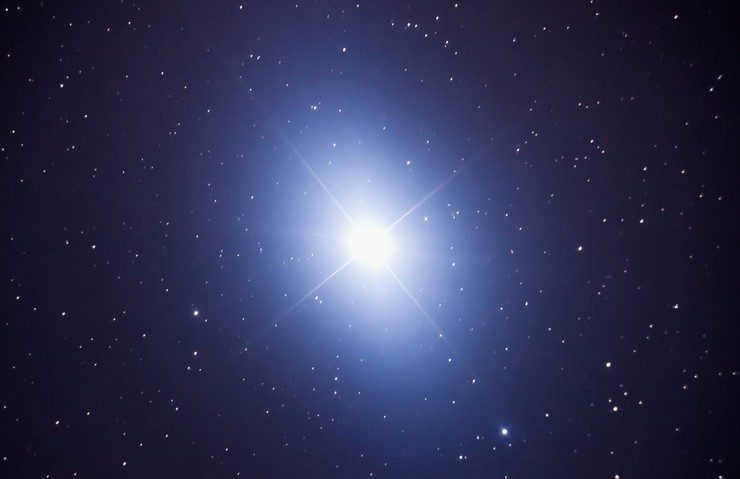
This particular celestial body is situated within the Lyra constellation and ranks as the fifth most luminous entity on our compilation. Interestingly, the image of Vega was captured subsequent to that of the Sun. Ancient astrologers designated Vega as the “preeminent” celestial body. It is positioned 25 light years away from our solar system. The Lyra constellation has undergone extensive examination, perhaps more so than any other stellar formation.
Vega holds the distinction of being the most brilliant star in the Northern Hemisphere.
Researchers have successfully determined that this star exhibits an extraordinarily rapid rotation speed. It has also been revealed that Vega is encompassed by an enigmatic dust disk.
The Assyrians gave the star the nickname “the sky’s judge,” as they believed it held the power of ultimate justice. In Greek mythology, Vega was associated with the lyre, an instrument crafted by Hermes. Eventually, Apollo bestowed this lyre upon the renowned Orpheus, a trusted companion of Jason, the famed leader of the Argonauts.
Astrologers believe that Vega is one of the fifteen stars with the greatest impact on human fate.
4- Arcturus (α Volopassus)
Arcturus, also known as α Volopassus, is the fourth brightest star in the night sky. It is a red giant located in the constellation Boötes. This star has a luminosity about 170 times that of the Sun and a diameter about 25 times larger. Arcturus is easily recognizable due to its distinct orange-red color. It is also one of the closest stars to Earth, with a distance of about 37 light-years. Arcturus has been studied extensively by astronomers and has provided important insights into the life cycles of stars.
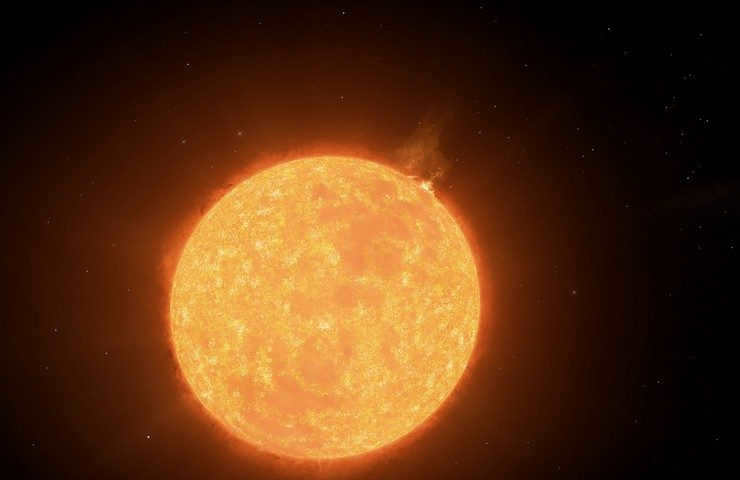
Arcturus, also known as Alpha Volopas, holds the fourth position on the list. This orange giant has a mass similar to that of our Sun, but it shines 100 times brighter. It would take approximately 36 light years to reach Arcturus.
In Russia, Alpha Volopas can be observed all year round. To locate it, one simply needs to mentally connect three bright points in the shape of an arc, forming the handle of the Big Dipper. Arcturus can be found at one end of this arc.
In ancient Greek mythology, Arcturus is believed to be the “guardian of the bear”. According to the Greeks, Arcturus protects a nymph named Callisto, who was transformed into a bear by Hera and later became the mother of Zeus.
3. Toliman (α Centauri).
Toliman, also known as α Centauri, is the third brightest star in the night sky. It is located in the Alpha Centauri star system, which is the closest star system to our Solar System. Toliman is a binary star system, composed of two stars that orbit around a common center of mass. The primary star, known as Toliman A, is a yellow dwarf star similar to our Sun. The secondary star, known as Toliman B, is a red dwarf star. The two stars are separated by a distance of about 23 astronomical units. Toliman is a relatively young star system, with an estimated age of about 6 million years. It is a popular target for astronomers due to its proximity and brightness.
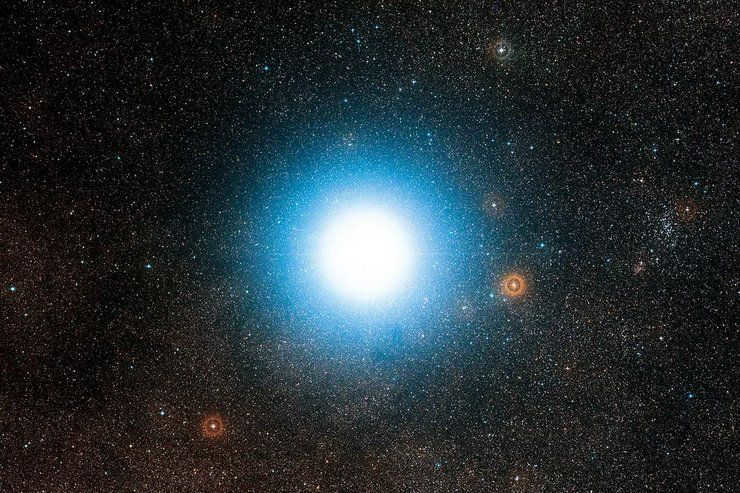
The renowned Alpha Centauri, also known as Toliman among astronomers, holds the distinction of being the third brightest celestial object. Interestingly, it is actually a triple star system, but due to optical effects, it appears as a single star to us.
Alpha Centauri is relatively close to us on a galactic scale, located only 4 light-years away, making it the nearest star. Two of the stars in the Procyon system bear striking similarities to our Sun, while the third star, Proxima Centauri, is a red dwarf. Scientists speculate that Alpha Centauri may possess its own planetary system, potentially harboring extraterrestrial life.
In the Southern Hemisphere, Alpha Centauri is part of the Southern Pointers star system, which aids in identifying the Southern Cross, a crucial navigational marker for seafarers. Toliman specifically assists in distinguishing the true Southern Cross from its impostor.
The term “centaur” is derived from the Greek word “centaur”. In Greek mythology, it is said that the centaur Chiron sacrificed his life to free the renowned Prometheus from captivity, resulting in the hero attaining immortality. In honor of this heroic act, Chiron was elevated to the status of a celestial constellation known as the Centaurus constellation.
2. Canopus (α Carinae)
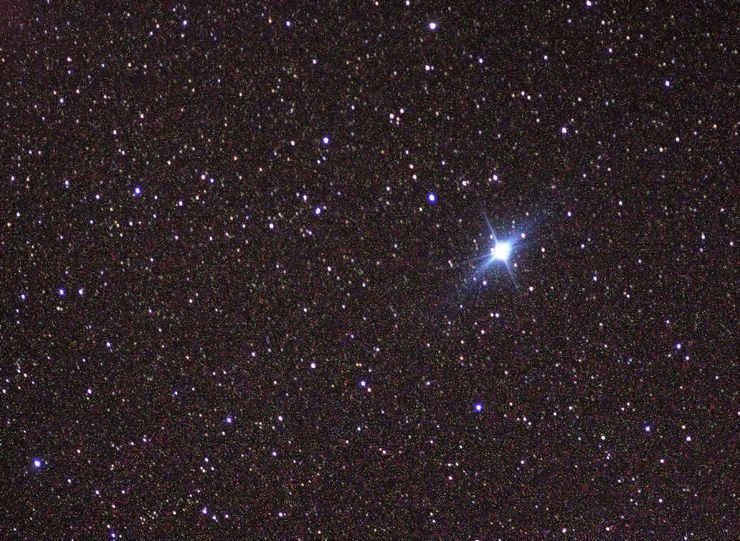
Canopus, also known as Alpha Kiel, is the second most luminous constellation. It can only be observed from the Southern Hemisphere. This yellowish-white supergiant is situated approximately 320 light-years away from our planet. In terms of luminosity, Canopus surpasses the Sun by a staggering 14,000 times!
Interestingly, it holds the title of the brightest star in the Southern Hemisphere.
If we were to describe a sphere with a radius of 700 light years around the Sun, there would be no other star as bright as Canopus within this region. However, due to its considerable distance from Earth, terrestrial astronomers classify Alpha Kiel as the second brightest star.
1. Sirius (α of Canis Major).
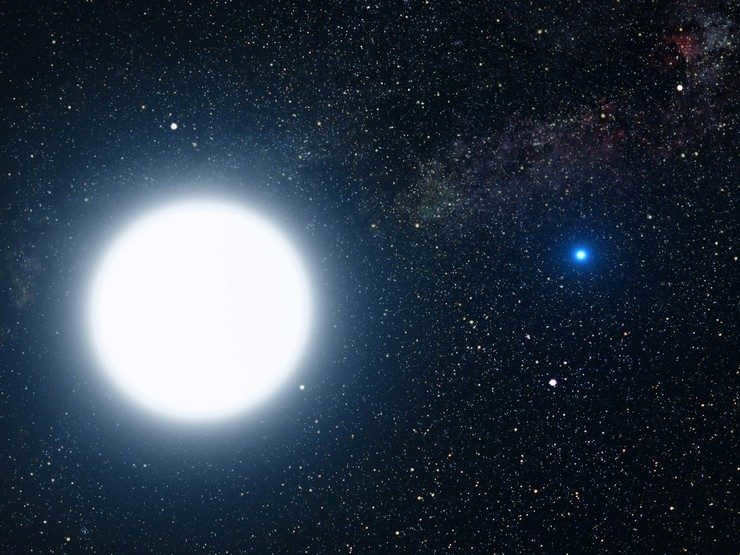
Ultimately, the champion of the list of the most luminous stars in our celestial sphere is Sirius, or scientifically known as the Alpha of the Big Dog. This particular celestial body outshines the Sun by a factor of 25. There are indeed numerous entities that emit a more intense glow than Sirius. However, due to its relatively close proximity in astronomical terms (8.6 light-years away), we perceive it as the most brilliant.
Sirius comprises a binary system, consisting of a red giant and a white dwarf. Locating it in the night sky is a straightforward task. Simply draw an imaginary line through the three stars forming Orion’s belt, and that line will lead you to this remarkable object in the southeastern direction. It can be observed from any location on the Earth.
There are numerous myths and legends surrounding Sirius. The Maori people believed that it served as a dwelling place for the gods, who would occasionally visit Earth. In ancient Egypt, Sirius was associated with the worship of Osiris, the god of the afterlife, and Isis, the goddess of fertility. The Sumerians held Sirius in high regard, considering it to be the most significant star. According to their beliefs, the gods descended from Sirius to bring life to Earth.
The beauty of the starry sky has always captivated humanity. Even in early stages of development, when people were clad in animal hides and relied on primitive stone tools, they would gaze upwards and marvel at the enigmatic shimmering lights scattered across the vast expanse of the celestial sphere.
The stars have long been a cornerstone of human mythology, believed by ancient civilizations to be the dwelling place of the gods. These celestial bodies have always held a sacred and unattainable aura for ordinary mortals. Astrology, one of humanity’s oldest sciences, sought to understand the influence of these celestial luminaries on human life.
Today, the stars continue to captivate our attention, but their study is primarily undertaken by astronomers and scientists. Meanwhile, science fiction writers imagine a future where humans can venture into the stars. Just as our distant ancestors did millions of years ago, the average person still looks up at the night sky in awe of its beautiful stars. To celebrate these celestial wonders, we have compiled a list of the most brilliant stars in the sky.

Coming in at number ten on our list is Betelgeuse, also known as α Orion. Astronomers have long been puzzled by this star, as its origin and periodic variability remain a mystery.
Belonging to the class of red giants, Betelgeuse is a true giant, measuring 500-800 times the size of our Sun. If it were placed in our solar system, its boundaries would extend all the way to Jupiter’s orbit. Interestingly, over the past 15 years, the size of Betelgeuse has actually decreased by 15%. Scientists are still trying to understand the cause of this phenomenon.
Situated 570 light-years away from the Sun, a journey to Betelgeuse is certainly not on the horizon in the near future.
9. Ahernar or α Eridanus.
Ahernar, also known as α Eridanus, is a star located in the constellation Eridanus. It is one of the brightest stars in the night sky and is notable for its rapid rotation, making it oblate in shape. Ahernar is a hot blue-white supergiant and is approximately 680 light-years away from Earth. Its name, Ahernar, comes from the Arabic phrase meaning “the end of the river,” referring to its position at the end of the Eridanus constellation, which represents a river in Greek mythology.
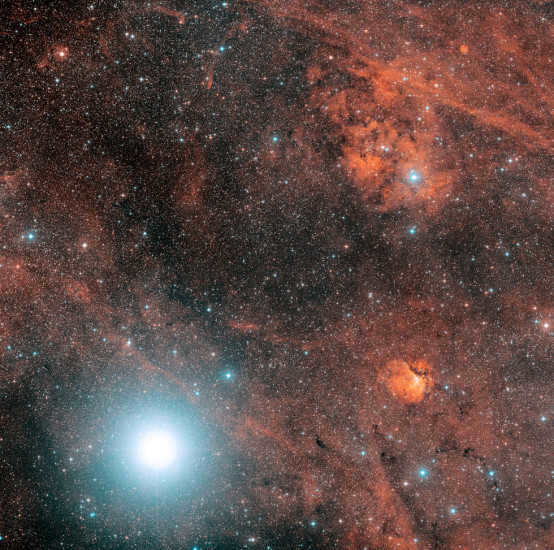
Ahernar, situated at the very edge of the Eridanus constellation, holds the distinction of being the first star in this constellation and ranks ninth on our compilation of the most brilliant stars in the night sky. This celestial body, a blue star, exceeds the mass of our Sun by eight times and shines a thousand times brighter.
Ahernar, positioned 144 light-years away from our solar system, remains an improbable destination for future space travel. Notably, this star exhibits a remarkable characteristic of rotating at an incredibly high speed around its own axis.
8. Procyon or α of the Lesser Dog
Procyon, also known as α Canis Minoris, is a bright star in the constellation Canis Minor. It is located at a distance of about 11.4 light-years from Earth and is the eighth-brightest star in the night sky. Procyon is a binary star system, consisting of a main sequence star and a white dwarf companion. It has a magnitude of 0.34 and is easily visible to the naked eye. Procyon is often referred to as the “Little Dog Star” due to its position in the constellation Canis Minor, which represents a small dog.
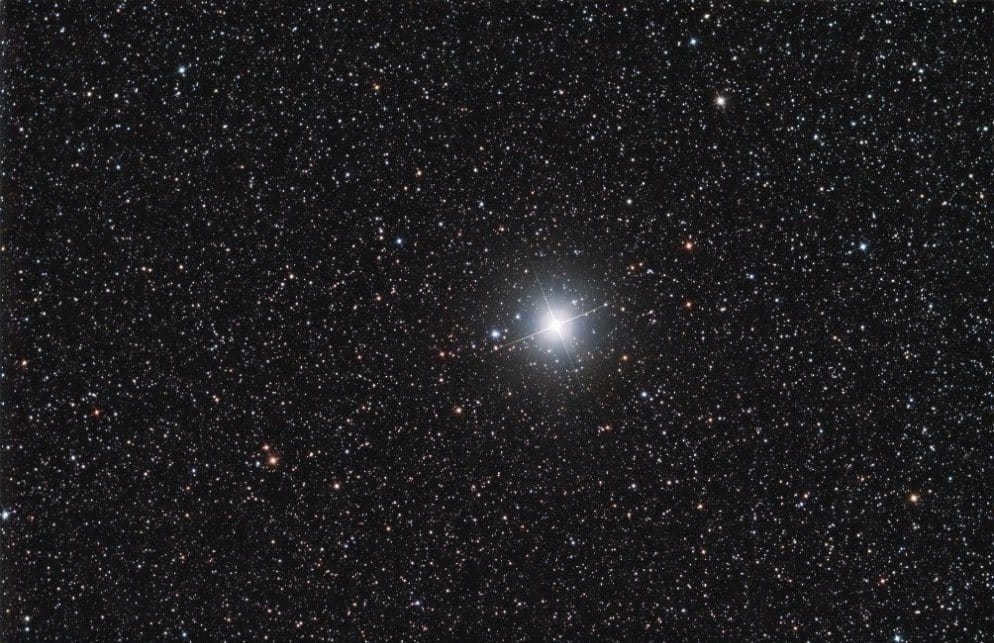
This celestial object is the eighth most luminous in our celestial sphere. The designation of this celestial object derives from the Hellenic language, meaning “prior to the canine”. Procyon is a constituent of the winter triangle, alongside Sirius and Betelgeuse.
This celestial object belongs to the binary star systems. In the firmament, we can observe the larger celestial object of the pair, while the second celestial object is a diminutive white dwarf.
A myth is intertwined with this celestial object. The constellation of Canis Minor symbolizes the canine companion of the first vintner Icarius, who was slain by deceitful shepherds after imbibing his own fermented grape juice. The loyal canine discovered the final resting place of his master.
7. Rigel or Beta Orionis
Rigel, also known as Beta Orionis, is a star in the constellation Orion. It is the brightest star in the constellation and the seventh brightest star in the night sky. Rigel is a blue supergiant and one of the most luminous stars known. It is located approximately 860 light-years away from Earth. Rigel has a mass about 23 times that of the Sun and a radius about 78 times that of the Sun. It has a surface temperature of about 12,000 Kelvin, making it one of the hottest stars in the universe. Rigel is a multiple star system, with at least four companions. It is a young star, estimated to be only 10 million years old. Rigel is also a variable star, with its brightness fluctuating slightly over time. In ancient times, Rigel was often associated with the mythical figure of Orion, the hunter. Today, it is an important star for astronomers, who study its properties and use it as a benchmark for comparing other stars.

This celestial body is ranked seventh in terms of brightness in our atmosphere. The primary reason for its relatively low position in our hierarchy is the significant distance between the Earth and this particular star. If Rigel were slightly closer (for instance, at the same distance as Sirius), it would easily surpass numerous other celestial bodies in terms of luminosity.
Rigel is classified as a blue-white supergiant. Its size is truly remarkable: it is 74 times larger than our Sun. In actuality, Rigel is not just one star, but rather a trio: in addition to the supergiant, this stellar assembly also includes two other smaller stars.
Rigel is situated approximately 870 light-years away from the Sun, which is quite a considerable distance.
The star’s name translates to “foot” in Arabic. This celestial body has been recognized by various cultures throughout history, including the ancient Egyptians, who believed that Rigel represented the deity Osiris, a prominent figure in their mythology.
6. Capella or α of the Ascendant
Capella, also known as α of the Ascendant, is a prominent star in the constellation of Auriga. It is one of the brightest stars in the night sky and has a unique history and significance in astronomy.
Capella is a binary star system, meaning it consists of two stars orbiting around a common center of mass. The two stars, Capella A and Capella B, are both giant stars, with Capella A being the brighter of the two. Capella A is a yellow giant star, similar in size and color to our Sun. Capella B is a smaller and cooler red giant star.
Capella is located relatively close to Earth, about 42.2 light-years away. It is visible from both the Northern and Southern Hemispheres and can be seen with the naked eye. Its brightness and visibility make it a popular target for amateur astronomers.
In ancient times, Capella held great significance in various mythologies and cultures. It was often associated with different deities and celestial beings. In Greek mythology, Capella was linked to the charioteer Auriga, who was associated with the messenger god Hermes. In Chinese mythology, Capella was part of the Heavenly Market Enclosure, a celestial area associated with trade and commerce.
Today, Capella is an important star for astronomers studying stellar evolution and binary star systems. Its unique properties and close proximity to Earth make it an excellent target for observation and research. Scientists continue to study Capella to gain insights into the life cycles of stars and the dynamics of binary systems.

Capella is one of the most stunning celestial bodies in the night sky. This double star, which was once its own constellation, is a symbol of a goat with goats. It consists of two yellow giants that orbit around a common center. These stars are each 2.5 times more massive than our Sun and are located 42 light years away from our solar system. They shine much brighter than our sun.
According to an ancient Greek legend, Capella is associated with the goat Amalthea, who nourished Zeus. One fateful day, Zeus accidentally broke off one of the goat’s horns, and from it emerged a cornucopia, spreading abundance throughout the world.
5. Vega or α Lyrae

Vega, also known as α Lyra, is considered to be one of the most brilliant and visually stunning stars that can be seen in our celestial sky. Positioned approximately 25 light-years away from our Sun, Vega is relatively close in cosmic terms. This star is a member of the Lyra constellation and boasts a size nearly three times that of our own Sun.
Vega possesses an impressive rotational velocity, spinning on its axis at an incredibly rapid pace.
Due to its proximity, Vega has been extensively studied by astronomers and researchers, making it one of the most thoroughly observed stars in existence.
Throughout the ages, numerous myths and legends from various cultures have been associated with this dazzling star. In our part of the world, Vega shines brightly in the night sky, being surpassed in brilliance only by Sirius and Arcturus.
4. Arcturus or α of Volopassus
Arcturus, also known as α of Volopassus, is a prominent star in the northern hemisphere. It is one of the brightest stars in the night sky and can be easily seen from Earth. Arcturus is located in the constellation Boötes and is approximately 37 light-years away from our solar system. Its spectral type is K1.5 III and it has a luminosity that is about 113 times greater than the Sun. Arcturus is a red giant star, which means it has exhausted the hydrogen fuel in its core and has expanded in size. Despite its distance, Arcturus is one of the closest stars to our solar system and has been studied extensively by astronomers. Its name, Arcturus, comes from the Greek word for “guardian of the bear” as it appears to watch over the constellation Ursa Major.
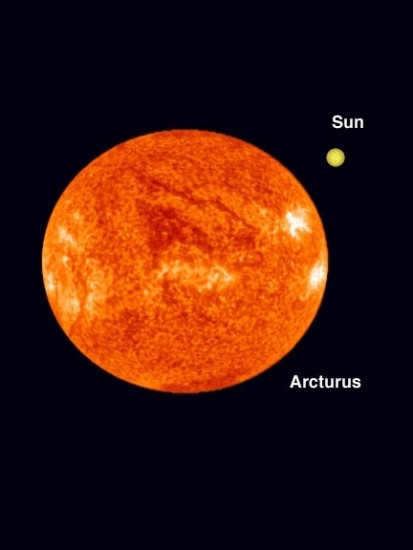
Arcturus is known as one of the most brilliant and exquisite stars in the celestial sphere, and its radiance can be observed from any location on Earth. This exceptional luminosity can be attributed to the star’s immense size and its relatively close proximity to our planet.
Arcturus belongs to the group of red giants and boasts an extraordinary magnitude. Situated at a distance of “merely” 36.7 light years from our solar system, it surpasses our own star in size by over 25 times. Furthermore, Arcturus shines with a brilliance that is 110 times greater than that of the Sun.
This celestial body is named after the constellation of Ursa Major. In Greek, its name means “protector of the Bear”. Arcturus is quite simple to observe in the night sky, as all you need to do is trace an imaginary arc along the handle of the Big Dipper.
3. Tholiman or α Centauri
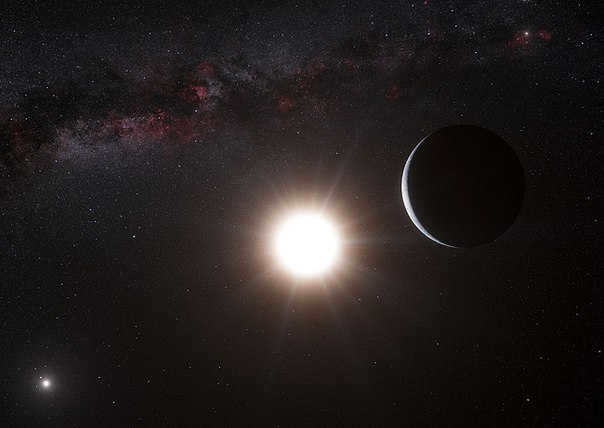
Coming in second place on our list is a triple star system known as Centaurus. This particular star system consists of three stars, two of which are similar in size to our own Sun, while the third star is a red dwarf known as Proxima Centauri.
The double star, visible to the naked eye, is commonly referred to as Toliban by astronomers. These stars are located in close proximity to our own solar system, hence their striking brightness when observed from Earth. However, in reality, their brightness and size are rather modest. The distance between the Sun and these stars is a mere 4.36 light-years, which is relatively close in astronomical terms. It is worth noting that Proxima Centauri, the red dwarf, was only discovered in 1915 and exhibits peculiar behavior, with occasional fluctuations in its brightness.
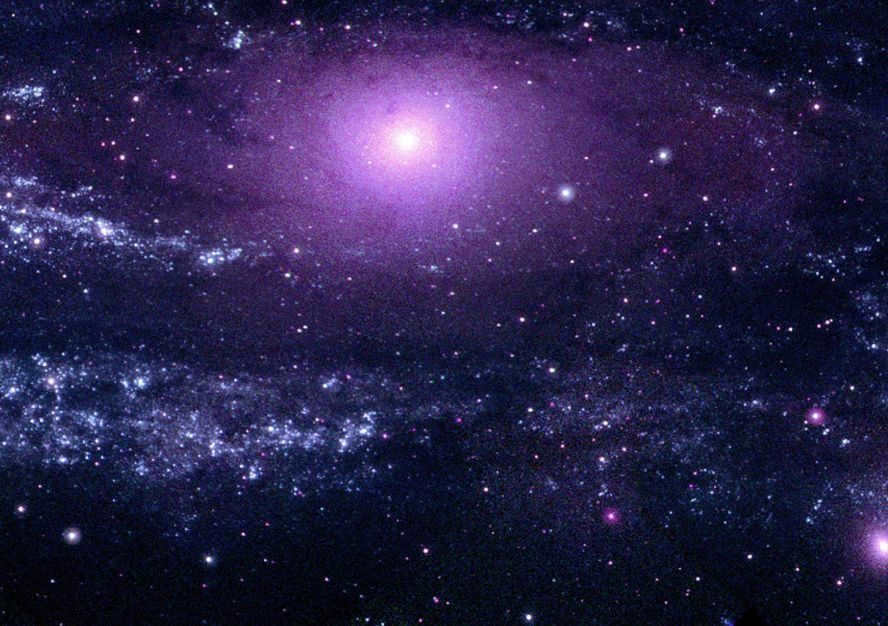
Canopus, the second brightest star in our sky, is unfortunately not visible to those in the northern hemisphere. It can only be seen in the southern hemisphere, and even then, only in tropical latitudes.
Similar to Polaris in the northern hemisphere, Canopus serves as the brightest star for navigation in the southern hemisphere.
Canopus is a massive star that is eight times larger than our sun. It belongs to the supergiant class and is only second in brightness due to its immense distance from us. The distance from the Sun to Canopus is approximately 319 light-years, making it the brightest star within a radius of 700 light-years.
There is no agreement on the etymology of the star’s name. It is believed that it was possibly named after the helmsman who served on Menelaus’ ship during the Trojan War, according to Greek mythology.
1. Sirius or α Canis Majoris

The most brilliant celestial body in the sky that is part of the Big Dog constellation. It holds great significance for humans, second only to our Sun, of course. Throughout history, people have held a deep reverence and admiration for this celestial object. Countless myths and legends have been written about it. The ancient Egyptians believed their gods resided on Sirius. This star is visible from any location on Earth’s surface.
The ancient Sumerians witnessed the presence of the gods on Sirius, whom they believed were responsible for creating life on Earth. The Egyptians closely monitored this celestial body, as it held great significance in their religious practices dedicated to Osiris and Isis. Moreover, the flooding of the Nile, crucial for agriculture, was determined by the position of Sirius.
Speaking of Sirius from an astronomical perspective, it is worth mentioning that it is a binary star system comprised of an A1 spectral class star and a white dwarf known as Sirius B. The naked eye cannot perceive the latter. These stars revolve around a common center once every 50 years. Sirius A is approximately twice the size of our Sun.
Sirius is located 8.6 light years away from our planet.
August 18 Horoscope. Greetings. Excerpt from the August 18, 2023 release
Code for embedding the video
Customization
If technically feasible, the player will start playing automatically when it is visible on the page
The size of the player will be adjusted automatically to fit the block on the page. Aspect ratio – 16×9
After playing the selected video, the player will continue playing videos from the playlist
Podcast.Lab: all episodes available

Space Stories. From the film camera to the astronaut selection: an interview with the cinematographer of the movie “Challenge”. Issue dated 17.08.2023
Anton Shkaplerov’s guests are Alexei Dudin, a participant in the “Challenge” project and a cinematographer. How did they prepare for filming? How did they find a stand-in for Klim Shipenko? How did they manage to select and prepare the crew in such a short time?


On the latest episode of the “Psyche” podcast, we are joined by married couple Anna and Alexander Tarasov. The focus of their discussion is Anna’s progressive phobia of traveling on any form of transportation. Can our experts find a way to help Anna overcome her fear?

It’s all about the Benjamins. Insider advice on building a portfolio for Q2 2023. Issue dated August 15, 2023.
Who qualifies as a private investor and what attributes should they possess? Where can one go to learn the art of investing and at what cost? Is theory or experience the key to success in this field? And what sets stocks, bonds, investments, and speculation apart?

The planet Neptune is associated with talents, profound emotions, and profound psychological revelations. However, are we prepared for its impact in our lives? How does this celestial body influence individuals born in March and September? What challenges might Neptune pose for those born in December and June?

What is the rationale behind conducting full genome studies on large populations, and who is eligible to participate? How do genetics and genetic variations truly impact individuals, and why is genetic identification often challenging?

Denis Gorelov, a film critic, has recently shared his thoughts on the latest releases in the world of cinema. In his latest review, he discussed the impact of three series – “Ballet”, “Volunteer Playlist”, and “Raicenter”.

Astrologer-forecaster Svetlana Dragan will be discussing the impact of the Black Moon in Leo (Lilith) during the latter part of August in the latest edition.

Dmitry Dibrov is hosting Marimba Plus, a band with a distinctive style and a twenty-year history. Lev Slepner, the group’s founder, composer, and marimba player, shares insights on the birth of music, the unique sounds of different instruments, and how their music seamlessly blends elements of academic tradition, folk, jazz, and electronic genres.

Anton Shkaplerov’s guest today is Alexander Khokhlov, the leader of the educational nanosatellite project. The conversation will revolve around the topic of how to pursue a career as an astronaut without actually venturing into space.

Alexander Mokhov, an esteemed actor, director, teacher, producer, and Honored Artist of Russia, graced Larisa Guzeyeva’s show as a guest from the Satire Theater.

Do laws exist in the realm of history? And if so, is it within our capacity to comprehend them? Is it accurate to judge current events from a vantage point in history? And if so, how much of a temporal gap is necessary? To what extent can historical analogies aid us in addressing present-day inquiries? And are they more advantageous or perilous in this endeavor?

Instead of talking, let them engage in reading. Alexander Livergant, a translator and writer-biographer, graced the 07.08.2023 issue with his presence.
What made the novels of Faulkner, Camus, Herman Hesse, and Virginia Woolf so popular in the Soviet Union during the 1980s? What untold secrets lie within Agatha Christie’s life? What new works of translated prose were published in the “Foreign Literature” magazine? Join Dmitry Bak in conversation with Alexander Livergant, a translator from English and a writer-biographer, as they delve into these intriguing topics.
With this timepiece
Highly sought-after
Suggested
Not too bad. Attire guidelines, retro vibes, and style controversies. Yana Besfamilnaya and Katya Klap. Release from 04.08.2023
Silence them, let them peruse. Interpreter and author-biographer Alexander Livergant. Release from 07.08.2023
Latest updates
Space stories. An interview with the operator of the movie “Challenge”: from the movie camera to the selection of astronauts. Issue dated 17.08.2023
Girls. Russian national figure skating team among juniors 2023/24. Short program control rolls
Juniors. Russian Junior Figure Skating Team 2023/24 control rolls. Short Program.
Juniors. Russian national figure skating team among juniors 2023/24. Free skating program control rolls
- About the company
- Promotions of the First
- Special projects
- OTT version of Channel One
- Online cinema
- HbbTV Interactive TV
- Channel One applications
- Channel One castings
- Tell your story about a WWII veteran
- All videos
- Transition to digital broadcasting
- Employment at First
- Television Ratings
- User Agreement
- Contact Information
- Feedback
My Subscriptions:
© 1996-2023, Channel One. All rights reserved.
Copying any materials, in whole or in part, is strictly prohibited.
If you wish to use any materials from this site, please provide a reference to the original resource.
The code for embedding videos on blogs and other platforms, which is available on our site, can be used without obtaining consent.
Unauthorized online streaming of our broadcasts is strictly prohibited.
Please submit an application if you intend to organize a broadcast.
You are welcome to embed the Channel One player on your website or social media accounts. To do this, simply click on the “Share” button located in the upper right corner of the player and copy the provided code. No additional approval is required.
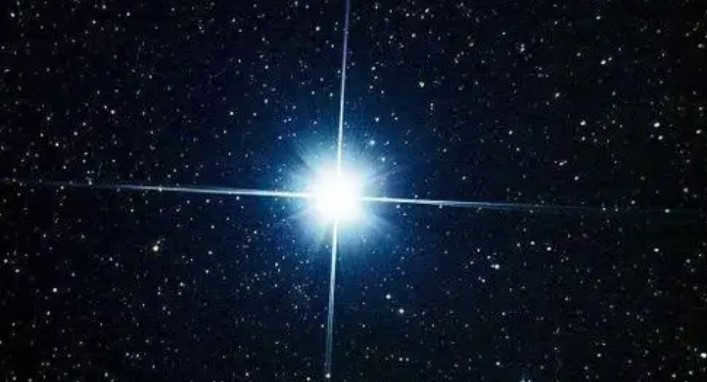
What is the name of the most luminous celestial object visible at night? In this article, you will discover the identity of the brightest star in the night sky, Sirius.
Sirius, situated in the constellation Canis Major, holds the distinction of being the most brilliant star in the night sky as seen from our home planet, Earth. Boasting a magnitude of 1.46, Sirius can be observed from any location on Earth. This astronomical wonder lies 8.6 light years away from our planet.
Ancient civilizations were aware of the existence of Sirius, yet they remained unaware of its fainter companion star, Sirius B, which was later discovered in 1862. The primary star, Sirius A, is commonly referred to as simply Sirius.
Sirius shines with a luminosity that is 20 times greater than that of the Sun.
Position of Sirius
The celestial body Alpha Canis Majoris, commonly referred to as Sirius, can be found in the constellation Canis Major. It holds the distinction of being the most luminous star in the nocturnal expanse, second only to Venus and Jupiter, and boasting an apparent magnitude of 1.46.
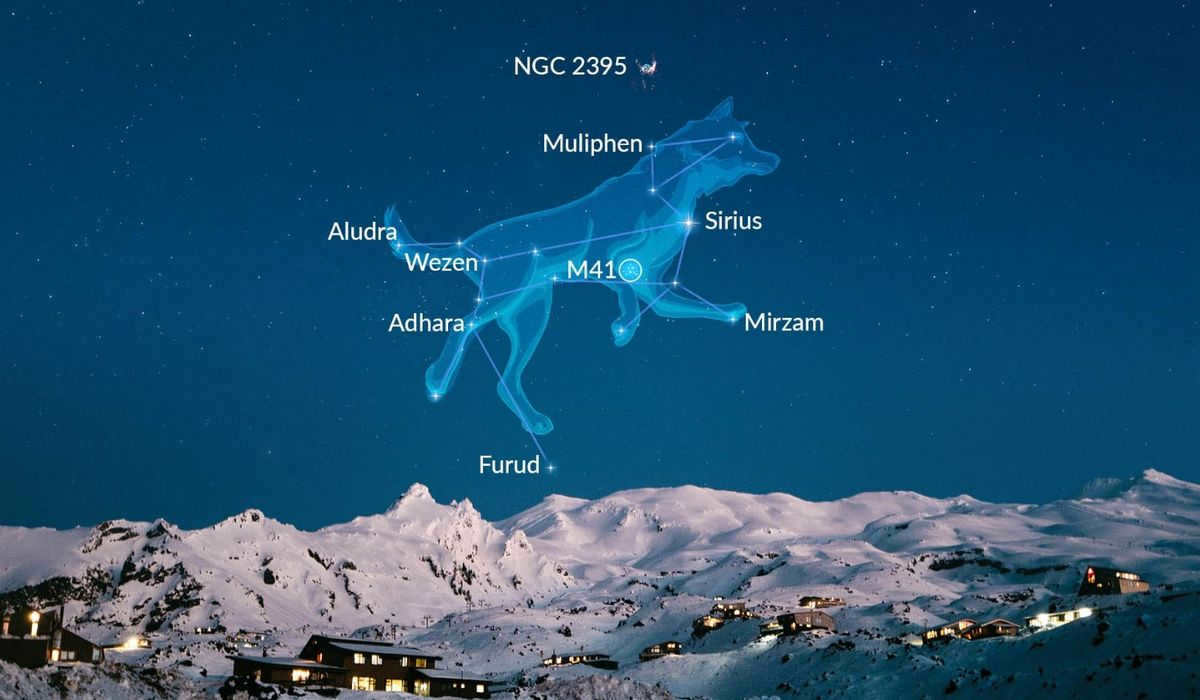
Many civilizations around the world have created legends and myths based on the prominent appearance of Sirius in the night sky.
Sirius is situated in the Big Dog constellation and is a blue-white main sequence star approximately 8.6 light-years away from our planet. It is a member of the Milky Way galaxy. Similar to the sun, Sirius is a celestial body that emits light and heat. Despite its great distance from Earth, Sirius appears incredibly bright due to its brightness being 25 times greater than that of the Sun. If the Sun occupied the same position as Sirius, it would not be visible to the naked eye from Earth.
A binary star system
Sirius is part of a binary star system, with its primary star, referred to as Sirius A, having a mass approximately twice that of the sun. It is accompanied by a companion star, the white dwarf Sirius B. This companion star is not only the earliest white dwarf observed by humans, but also one of the largest white dwarfs in existence.
The primary star of Sirius is a massive star, resulting in a relatively intense nuclear fusion reaction, which gives the star its bright white light.
Is there extraterrestrial life in the vicinity of Sirius?
Legends surrounding Sirius abound, with rumors suggesting the presence of beings from the Sirius star system who allegedly visited Earth millennia ago and established communication with the Dogon tribe, an indigenous people in Africa.
Hailing from the Niger River Valley in West Africa, the Dogon tribe has long embraced a nomadic and agrarian lifestyle. Despite their primitive origins, the Dogon tribe is believed to possess astronomical knowledge surpassing mere observation. According to their accounts, intelligent entities from Sirius arrived on our planet thousands of years ago, establishing contact with the Dogon people and imparting their advanced wisdom. Strikingly, the Dogon tribe possessed knowledge of Sirius having a companion star of considerable density, as well as awareness of its orbital period, which spans approximately 50 years.
What makes this so remarkable is that it wasn’t until the 1800s that astronomers utilized contemporary astronomical understanding and observation equipment to uncover that Sirius had a second star. In 1844, German mathematician and astronomer Bessel proposed that Sirius was a binary star system based on the pattern of waves observed in its trajectory.
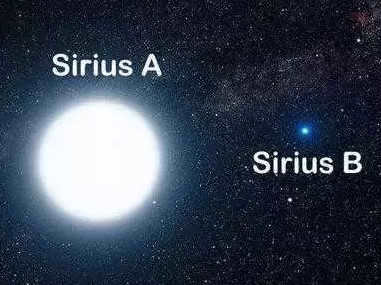
Based on his observations, it was determined that the companion star had an orbital period of approximately 50 years. The first recorded sighting of the companion star was made by American astronomer Clark in 1862 using a refractor telescope.
In 1928, utilizing state-of-the-art astronomical observation equipment, scientists discovered that it was an exceptionally compact and dense white dwarf.
The Legend of Sirius According to the Dogon Tribe
How did an ancient tribe without access to telescopes possess knowledge about Sirius having a companion star? Could this information have been passed down by the Sirians themselves?
The Dogon people first caught the attention of the world in the early 20th century when it was discovered that they believed in the existence of a companion star to Sirius. It is important to note that the Dogon do not have a written language of their own, so these legends have been passed down through oral tradition. By the 19th century, the existence of a companion star to Sirius was already known outside the Dogon tribe, and they had some means of communication with the outside world. Therefore, it is likely that the astronomical knowledge found in the Dogon legend of Sirius was acquired from external sources.

Is it possible for intelligent life to emerge from the Sirius star system?
In reality, the likelihood of Sirius having planets is quite low due to its status as a binary star system and its unstable orbit. Additionally, in a system with multiple stars, even if a planet were to exist, the conditions on that planet would be incredibly harsh, making it unlikely for life to originate, let alone for an intelligent civilization capable of interstellar travel to develop.
The impact of stars on planets is evident. The present duration of Sirius A is 300 million years, and its lifespan can be determined by its mass. Scientists approximate that in 1 billion years, Sirius A will expand into a red giant because of the exhaustion of hydrogen in its core. Similar to Sirius B, it will transform into a white dwarf. Currently, the Sun has a lifespan of 4.6 billion years, and it will require approximately 5 billion years to evolve into a red giant. Stars are undergoing the process of dying, and sustaining life on planets without their light and warmth is nearly impossible without advanced technology.

